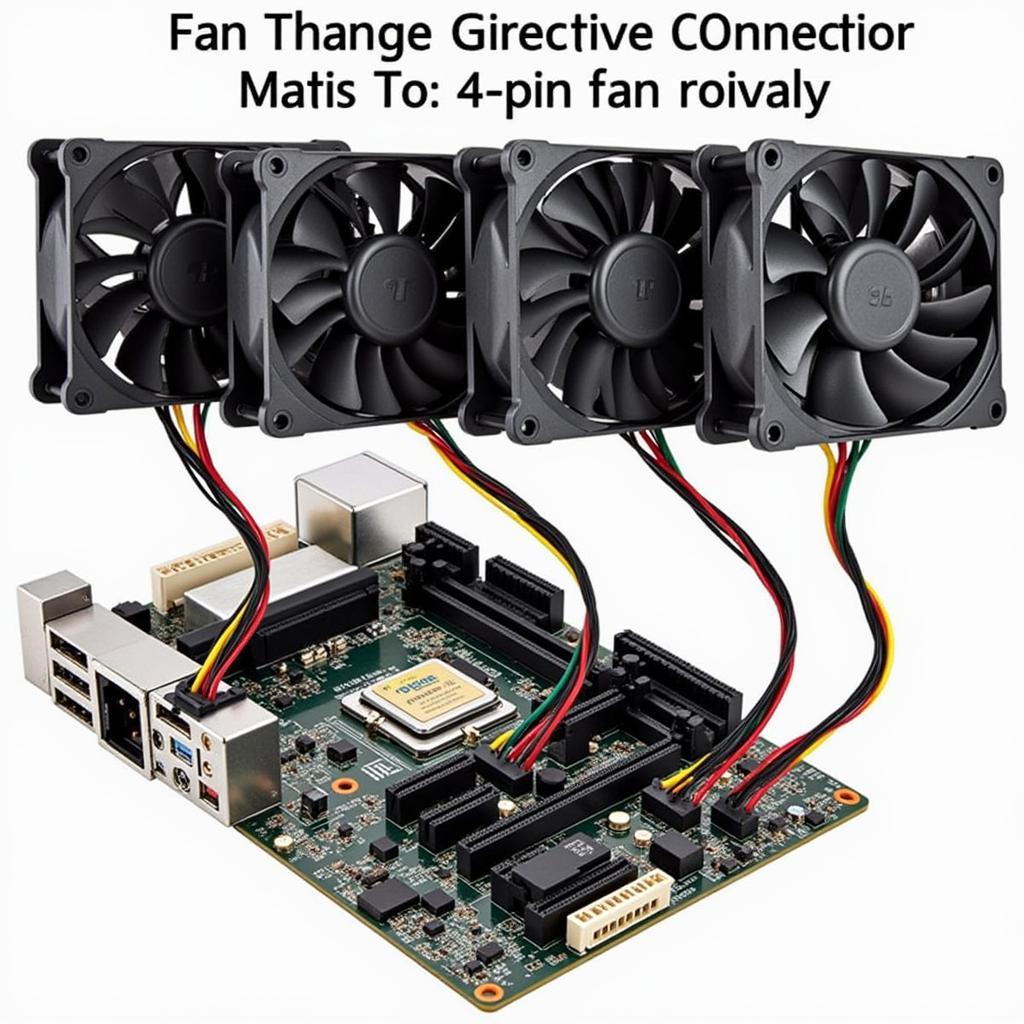Connecting multiple fans to your motherboard is crucial for optimal airflow and preventing overheating, especially for high-performance systems. This guide will walk you through the process, covering various connection methods and best practices for a cool and efficient PC. We’ll discuss everything from using fan splitters and hubs to leveraging motherboard headers and even exploring PWM control for precise fan management. Let’s dive in and learn how to connect more than one fan to your motherboard.
Understanding the various options for connecting multiple fans to your motherboard can seem daunting at first, but with a little guidance, you’ll be able to optimize your system’s cooling performance. Whether you’re adding a new case fan, upgrading your CPU cooler, or building a custom water-cooling loop, knowing how to properly connect your fans is essential. Incorrect connections can lead to fan malfunctions, system instability, and even damage to your components. So, let’s explore the different methods and ensure your system stays cool and runs smoothly. For instance, you might be looking for solutions for specific hardware like a “hp z600 error real fan”.
Different Methods to Connect Multiple Fans
There are several ways to connect more than one fan to your motherboard, each with its own advantages and disadvantages. Choosing the right method depends on your specific needs and the capabilities of your motherboard.
Using Fan Splitters
Fan splitters are a cost-effective way to connect multiple fans to a single motherboard header. These small adapters allow you to power two or more fans from one 4-pin or 3-pin connector. This is particularly useful if your motherboard has a limited number of fan headers. However, be mindful of the total power draw of the connected fans, ensuring it doesn’t exceed the header’s limit.
Utilizing Fan Hubs
Fan hubs offer a more organized and versatile solution. These hubs typically connect to a single motherboard header and provide multiple ports for connecting several fans. Some hubs even offer additional features like PWM control and monitoring. A fan hub can significantly simplify cable management and provide a central point for controlling your fans.
Leveraging Motherboard Headers
If your motherboard has enough fan headers, you can connect each fan directly to a dedicated header. This method allows for individual control over each fan’s speed and monitoring. Check your motherboard manual to identify all available fan headers and their respective functions. You might even find specific solutions, such as a “fan 92” compatible with your setup.
 Connecting Fans Directly to Motherboard Headers
Connecting Fans Directly to Motherboard Headers
PWM Control for Precise Fan Management
Pulse Width Modulation (PWM) allows for precise control over fan speed based on temperature readings. Most modern motherboards and fans support PWM, enabling dynamic fan speed adjustments for optimal cooling and noise levels. This is particularly beneficial for maintaining a quiet system under light loads while ensuring sufficient cooling under heavy loads. Even if you’re considering a specialized cooling solution like a “gtx 970 air fan block,” understanding PWM is beneficial.
Troubleshooting Fan Connection Issues
Sometimes, despite your best efforts, you might encounter issues with fan connections. Here are a few common problems and how to address them:
- Fan not spinning: Double-check the connections and ensure the fan is plugged in correctly. Also, verify that the fan header is enabled in the BIOS. Sometimes, a simple solution like checking for a specific issue, such as “hp z600 error real fan,” can resolve the problem.
- Fan spinning at full speed: Check the BIOS settings for fan control options. Ensure PWM control is enabled if supported by your motherboard and fan.
- Noise from fans: Excessive noise can indicate a failing fan or improper mounting. Try adjusting fan curves in the BIOS or using noise-dampening materials.
Conclusion
Connecting multiple fans to your motherboard is essential for maintaining optimal system temperatures and preventing overheating. By understanding the various connection methods, such as using fan splitters, hubs, or motherboard headers, you can ensure efficient cooling for your components. Implementing PWM control further enhances fan management, allowing for precise speed adjustments based on system load. By following the guidelines outlined in this article, you can effectively connect more than one fan to your motherboard and enjoy a cool, quiet, and stable system. Looking for a specific fan like a “fan quạt tản nhiệt laptop acer 3820 3820t 3820g 3820tg” can also contribute to optimized cooling. Remember, a well-cooled system is a happy system, so prioritize proper fan management for optimal performance and longevity. If you’re unsure about anything related to fans and cooling, don’t hesitate to seek expert advice. It’s not here we need a fan, it’s everywhere in a high-performance system.
FAQ
- How many fans can I connect to a single motherboard header using a splitter?
- What is the difference between a 3-pin and a 4-pin fan connector?
- How do I enable PWM control in the BIOS?
- What is the maximum power draw that a fan header can handle?
- Can I mix different types of fans on the same fan hub?
- How can I monitor the speed of my fans?
- What should I do if a fan is making a grinding noise?
Contact us for 24/7 support at Phone Number: 0903426737, Email: fansbongda@gmail.com Or visit us at: Lot 9, Area 6, Gieng Day Ward, Ha Long City, Gieng Day, Ha Long, Quang Ninh, Vietnam.


